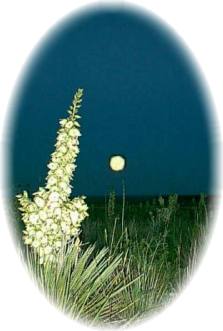
A plaque was erected in 1983 at the north side of the courthouse in Boise City, observing the crossing of this area by the 500 man Mormon Battalion from September 23 through 27, 1846. This monument honors the courage and fortitude of a group of brave and dedicated people from The Church of Jesus Christ of Latter-day Saints who volunteered for the duty.
These men and their families, persecuted for their beliefs wherever they tried to live in peace, were anxious to leave Nauvoo, Illinois, and join Brigham Young's group of faithfuls in Utah. Their hopes began to come true when the U.S. Army formed a battalion of Infantry from the Mormons, enabling them to move West.
Following instructions from President James K. Polk and the War Department, the Mormons left Council Bluffs, Iowa, on July 16, 1846, the same day they joined the service. On August 1 they arrived at Fort Leavenworth, where each man was issued equipment and a clothing allowance of 42 dollars, almost all of which was sent back to the men's families. This enabled the ones left behind to travel by a more direct route to Utah, but it left the soldiers, in most cases, with only the clothes on their backs, and on the long journey ahead they suffered from lack of decent footgear and warm clothing.
The history of the Mormon Battalion began when the United States Congress declared war on Mexico, May 13, 1846. American goals were to conquer and hold the isolated provinces of northern Mexico and to end the war quickly by taking Mexico City. In order to accomplish this, General Winfield Scott, President Polk and his advisors outlined the strategy. Three armies would conquer Mexico. General Zachary Taylor, "Old Rough and Ready", defeated and held Chihuahua and northeastern Mexico. Leading the "Army of the West", Colonel (later General) Stephen W. Kearney occupied Santa Fe and then marched to subjugate California. His objectives were to conquer and hold the provinces of New Mexico and California. Finally, General Scott captured Mexico City, thereby forcing the Mexicans to sue for peace. The Treaty of Guadalupe Hidalgo, signed February 2, 1848, formally ended the war.
Colonel Kearney, who marched form Fort Leavenworth to Santa Fe ahead of the Mormon Battalion, conquered Santa Fe without firing a shot, and proceeded to Southern California.
Under orders from Kearney, the Mormons generally followed the Cimarron Route of the Santa Fe Trail to Santa Fe. Colonel Philip St. George Cooke assumed command in Santa Fe and led the battalion by a circuitous route to San Diego. The 2,000 mile journey was at that time the longest march by Infantry in U.S. Military history.
By Norma Gene Young
